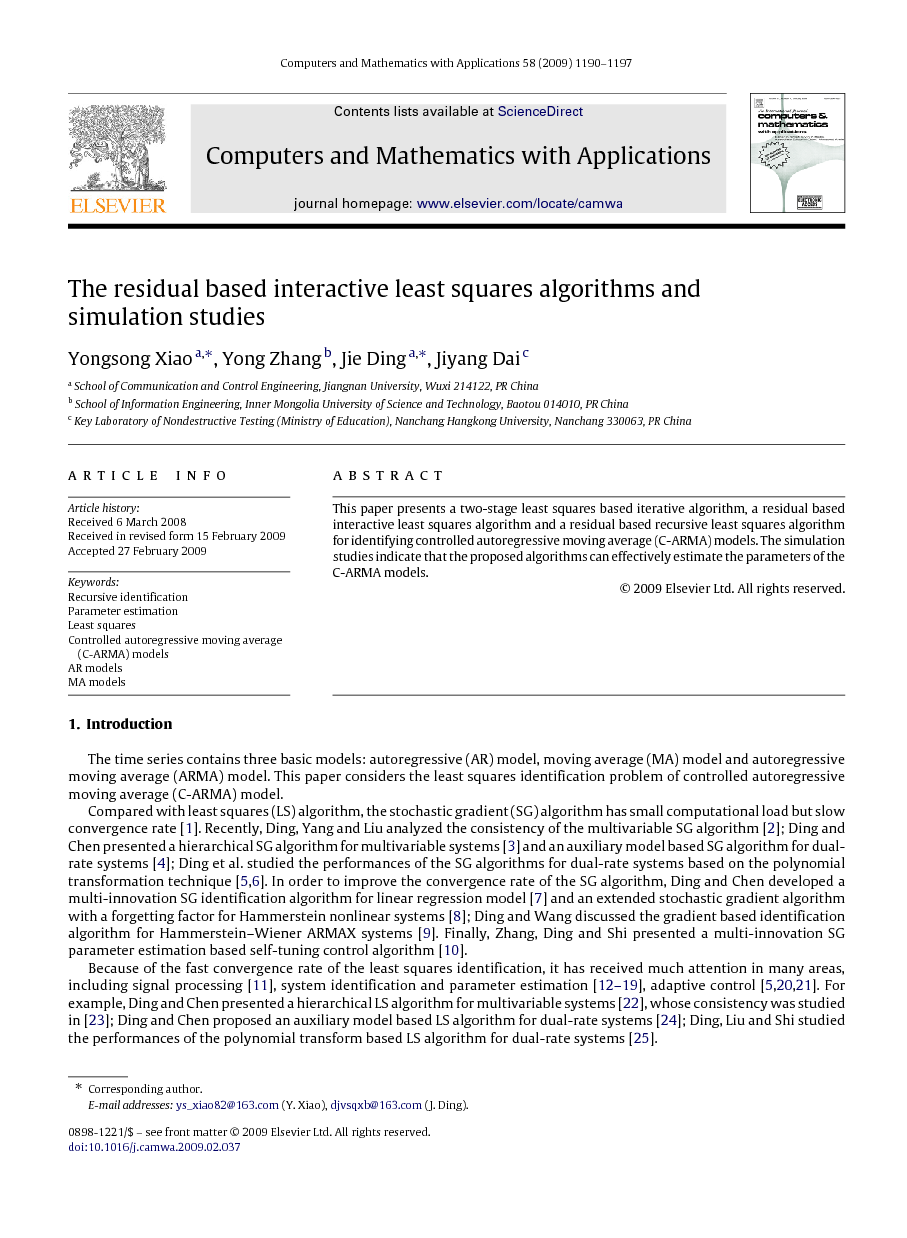ترجمه فارسی عنوان مقاله
باقی مانده های تعاملی مبتنی بر حداقل مربعات الگوریتم ها و مطالعات شبیه سازی
عنوان انگلیسی
The residual based interactive least squares algorithms and simulation studies
| کد مقاله | سال انتشار | تعداد صفحات مقاله انگلیسی |
|---|---|---|
| 10012 | 2009 | 8 صفحه PDF |
منبع

Publisher : Elsevier - Science Direct (الزویر - ساینس دایرکت)
Journal : Computers & Mathematics with Applications, , Volume 58, Issue 6, September 2009, Pages 1190-1197
ترجمه کلمات کلیدی
شناسایی بازگشتی -
برآورد پارامتر -
حداقل مربعات -
کنترل خود بخود حرکت میانگین -
کلمات کلیدی انگلیسی
Recursive identification,
Parameter estimation,
Least squares,
Controlled autoregressive moving average

